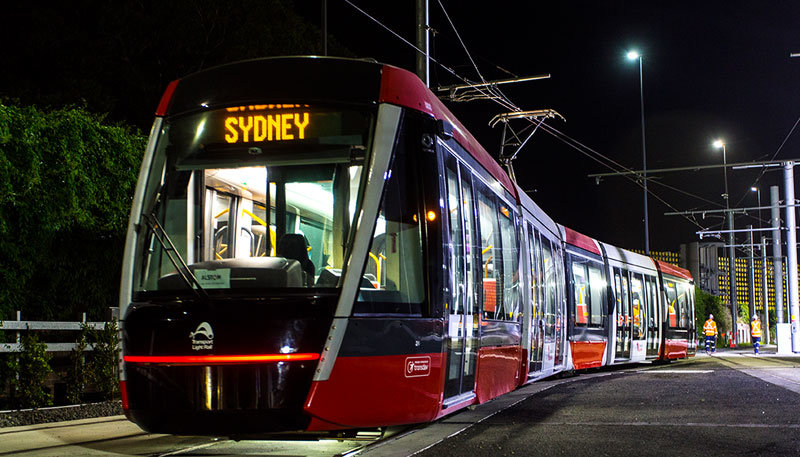Parramatta light rail

Stage 1 of the Parramatta Light Rail is one of the NSW Government’s latest major infrastructure projects being delivered by Transport for New South Wales (TfNSW) to serve a growing Sydney. The light rail will create new communities, connect great places and help both locals and visitors move around and explore what the region has to offer, with approximately 28,000 people using the Parramatta Light Rail every day by 2026.
Stage 1 of the Parramatta Light Rail will connect Westmead to Carlingford via the Parramatta CBD and Camellia with a two-way track spanning 12km and is expected to open in 2023.
The route will link Parramatta’s CBD and train station to the Westmead Health Precinct, Cumberland Hospital Precinct, the Bankwest Stadium, the new science, technology and innovation museum Powerhouse Parramatta, the private and social housing redevelopment at Telopea, Rosehill Gardens Racecourse and three Western Sydney University campuses.
Conscious of the impact traditional construction work can have on the environment and aligning with the objectives of the TfNSW Environment and Sustainability Policy (2020), the Parramatta Light Rail is pioneering innovative sustainability solutions, focused on maximising the social, economic and environmental benefits.
Creating an inclusive workforce
The first area of sustainable practice – social sustainability – has been an integral part of the project. Set in the heart of the diverse and growing Western Sydney community, the project is dedicated to building a workforce that is inclusive and skills focused.
Through initiatives and programs, such as the Indigenous Participation Program, the Industry Skills Legacy Program (ISLP), the Pre Employment Program and Learning Workers, the Parramatta Light Rail is compelling delivery partners to increase workforce diversity and inclusion.
A stepping stone into the workplace, these programs help participants from a range of underrepresented backgrounds to develop the necessary skills and qualifications to gain work and experience in the construction industry.
At a community level, the programs achieve increased job growth and economic development of disadvantaged and diverse NSW communities and businesses.
The economic benefits that flow on from the social and workplace programs have seen 1.5 per cent of the total estimated contract value spent supporting Indigenous participation and social enterprise businesses, as well as providing employment opportunities to new humanitarian entrants in Australia.
Best environmental outcomes
Along with social sustainability, the project has an equally strong focus on environmental sustainability. The light rail network is a more sustainable transport option for the community and is expected to take the equivalent of 25,000 cars off the road by 2041, and see more than 3,500 trees planted in Parramatta’s streets that are most susceptible to heat.
The project is pledging a 15 per cent reduction in overall water use and at least a 15 per cent reduction in greenhouse gas emissions during construction.
By combining the light rail track with an Active Transport Link to create shared pathways for light rail users, pedestrians and cyclists alongside three key sections of the alignment, the community can benefit from staying active while accessing transport options.
Through innovative and considered initiatives, the Parramatta Light Rail project has worked in collaboration with its partners and subcontractors to engage in construction practices that will achieve the best outcomes for the environment and the light rail design.
Recycled materials reducing carbon dioxide output
The team has demonstrated that staying on track does not always require new tracks to be used. More than half of the ballast, 60 per cent of the rail tracks and 50 per cent of the sleepers removed last year from the original single-track T6 Carlingford Rail Line is being reused to convert the five kilometre Carlingford to Camellia corridor to the new Parramatta Light Rail.
In preparation for its reuse, more than 8,000 cubic metres of ballast was washed and re-screened to meet specifications for the light rail.
